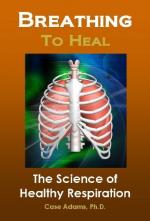|
This section contains 925 words (approx. 4 pages at 300 words per page) |

|
Respiration is the physiological process that produces high-energy molecules such as adenosine triphosphate (ATP). The high-energy compounds become the fuel for the various manufacturing and growth processes of the cell. Respiration involves the transfer of electrons in a chemically linked series of reactions. The final electron acceptor in the respiration process is oxygen.
Respiration occurs in all types of organisms, including bacteria, protists, fungi, plants, and animals. In eukaryotes, respiration is often separated into three separate components. The first is known as external respiration, and is the exchange of oxygen and carbon dioxide between the environment and the organism (i.e., breathing). The second component of respiration is internal respiration. This is the exchange of oxygen and carbon dioxide between the internal body fluids, such as blood, and individual cells. Thirdly, there is cellular respiration, which is the biochemical oxidation of glucose and consequent synthesis of ATP.
Cellular...
|
This section contains 925 words (approx. 4 pages at 300 words per page) |

|


